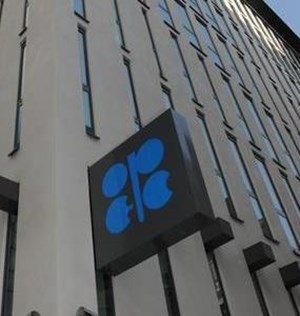OPEC+ sticks with production cuts as oil nears $90 per bbl
(Bloomberg) – OPEC+ chose to stick with oil production cuts for the first half of the year, keeping global markets tight and potentially sending prices higher.
A panel of key members led by Saudi Arabia recommended no policy changes at an online review meeting on Wednesday, according to a statement posted on the group’s website. That means roughly 2 MMbpd of production curbs will remain in place until the end of June.
The cuts by OPEC and its partners, combined with surprisingly resilient fuel demand, have helped push crude prices to almost $90 a bbl in London, the highest level this year. Ongoing conflict in the Middle East is also propping up crude futures.
By keeping the curbs in place, OPEC+ looks set to ensure that global oil markets remain in a slight deficit during the second quarter, according to the International Energy Agency in Paris. The shortfall could send oil prices toward $100 a bbl, JPMorgan Chase & Co. has warned.
The Joint Ministerial Monitoring Committee “will continue to closely assess market conditions” and OPEC+ members confirmed “their readiness to take additional measures at any time,” according to the statement.
That could spell discomfort for consumers still smarting from years of rampant inflation and complicate the job of central banks seeking to loosen monetary policy. However, for the Saudis and its allies, the rally shores up vital government revenues.
Global benchmark Brent crude traded 1% higher at $89.80 by 1:09 p.m. in London.
“It is a market that is on firm fundamental footing, no question,” Bob McNally, founder of consultants Rapidan Energy Group and a former White House adviser, said in a Bloomberg Television interview.
The group’s production cuts have managed to tighten the market even though some key members — notably Iraq and Kazakhstan — haven’t implemented their agreed reductions.
Members were once again urged to adhere to their commitments at Wednesday’s committee meeting, according to the closing statement. Iraq and Kazakhstan, who have pledged additional cutbacks to compensate for overproducing, were asked to submit detailed plans on this by the end of April.
The two countries have a patchy track record when it comes to delivery. Baghdad has often chafed against OPEC+ output limits as it seeks revenues to rebuild a shattered economy.
Russia, which jointly leads OPEC+ with the Saudis, has also shown a mixed performance. The country belatedly implemented crude oil production cuts promised a year ago, but its delivery of export reductions agreed for this year is less clear.
While its shipments of fuels like diesel have fallen, this may be linked to Ukrainian drone strikes on Russian refineries. Meanwhile, its exports of crude are rebounding. President Vladimir Putin has been using oil revenues to continue waging war against Ukraine.
The full 22-nation OPEC+ alliance will gather at its Vienna headquarters on June 1 to decide whether to continue the supply cuts into the second half of the year. The JMMC will convene again the same day, to review markets on behalf of ministers.
While some forecasters such as JPMorgan and Standard Chartered Plc believe the alliance can relax the cuts and restore production, others are less confident. Estimates from the IEA show that if OPEC+ eases the cutbacks, world markets will tip back into surplus.
Saudi Energy Minister Prince Abdulaziz bin Salman has often urged fellow members to remain cautious in reviving halted supplies.
But neighboring United Arab Emirates appears eager to deploy newly installed production capacity and has on prior occasions clashed with Riyadh over the right to use it. Abu Dhabi pointed to the OPEC+ caps in a report this week as a reason why it had to lower economic growth projections.
Rapidan’s McNally said the group’s gathering in June promises to be “lively.”



